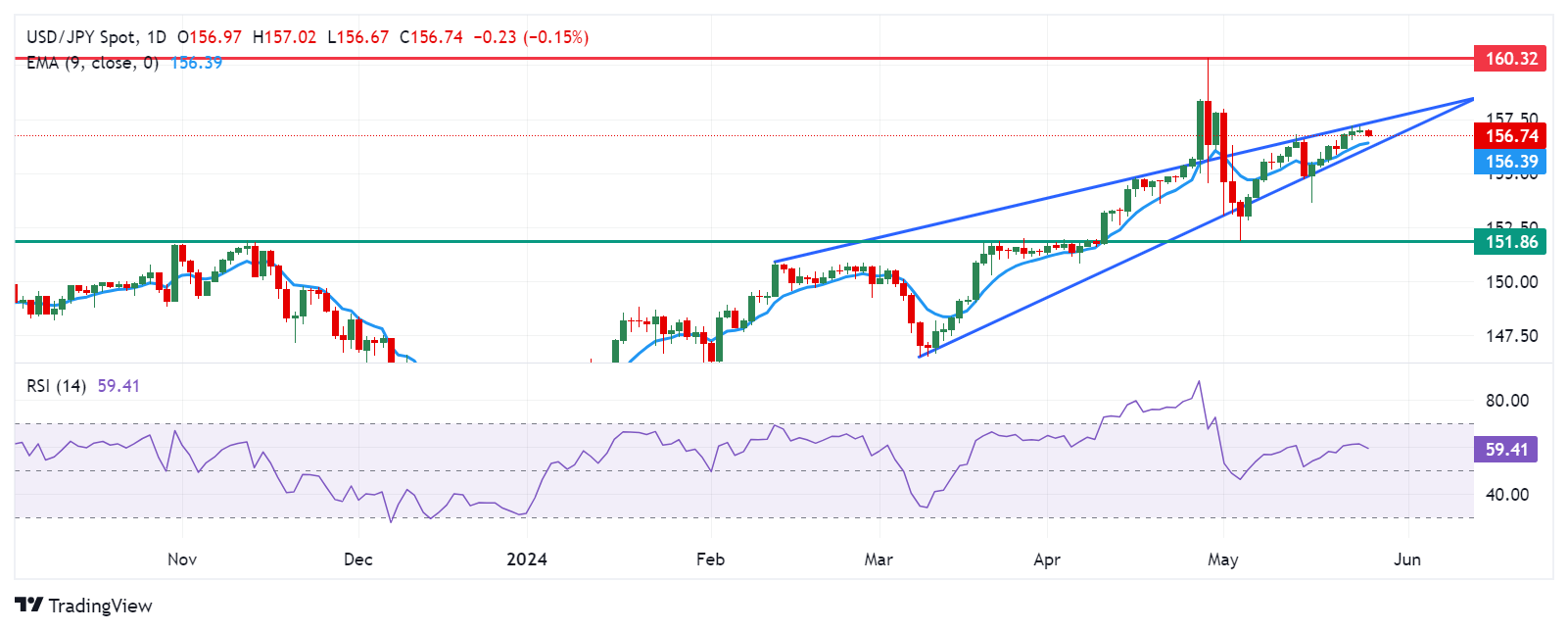Japanese Yen appreciates as BoJ to consider policy tightening amid higher inflation

- The Japanese Yen gained ground amid improved risk appetite on Monday.
- BoJ Governor Kazuo Ueda said there is a need to re-anchor inflation expectations at the 2% target.
- The US Dollar lost ground due to the lower 10-year US Treasury yield after softer UoM 5-year Inflation Expectation.
The Japanese Yen (JPY) halted its three-day losing streak, possibly influenced by comments from Bank of Japan (BoJ) Governor Kazuo Ueda on Monday. Ueda remarked that progress has been made in moving away from zero and raising inflation expectations, but there is a need to re-anchor them, this time at the 2% target. He also said that the BoJ will proceed cautiously, aligning with other central banks that have inflation-targeting frameworks.
Japan’s annual inflation rate remained above the Bank of Japan’s 2% target. This sustained inflationary trend exerts pressure on the central bank to contemplate policy tightening. The BoJ has underscored the importance of a virtuous cycle characterized by sustained and stable attainment of its 2% price target, coupled with robust wage growth, as essential for policy normalization.
The US Dollar Index (DXY), which measures the value of the US Dollar (USD) against the six other major currencies, trades near 104.70 by the press time. On Friday, the Greenback lost ground due to the lower 10-year US Treasury yield, which stood at 4.46%. This could be attributed to the improved risk sentiment after the softer University of Michigan’s 5-year Consumer Inflation Expectations for May on Friday.
Daily Digest Market Movers: Japanese Yen advances after remarks from BoJ officials
- BoJ Deputy Governor Shinichi Uchida stated on Monday that they have reverted to a conventional monetary policy framework, with the objective of achieving a 2% price stability target through adjustments of the short-term policy rate. Uchida also said that they have successfully navigated past the zero-lower bound.
- UoM 5-year Consumer Inflation Expectations eased slightly to 3.0%, falling below the forecasted 3.1%. Despite the upward revision of the Consumer Sentiment Index to 69.1 from a preliminary reading of 67.4, it still indicated the lowest level in six months. These figures likely bolstered investors’ sentiment regarding potential rate cuts by the Federal Reserve.
- According to the CME FedWatch Tool, the probability of the Federal Reserve implementing a 25 basis-point rate cut in September has decreased to 44.9% from 49.0% a week earlier.
- On Friday, the US Census Bureau released Durable Goods Orders, indicating a strong rebound in April with a 0.7% MoM increase, contrasting the forecasted 0.8% decline. However, March’s figure was revised downward to 0.8% from the initial estimate of 2.6%.
- Japan’s National Consumer Price Index (CPI) dropped to 2.5% YoY in April from 2.7% in the previous month, marking the second consecutive month of moderation but still staying above the Bank of Japan’s (BoJ) 2% target. This sustained inflation keeps pressure on the central bank to consider further policy tightening.
- Japan’s 10-year government bond yield surpassed 1% last week for the first time since May 2013, fueled by traders’ increasing bets that the Bank of Japan would tighten policy further in 2024.
Technical Analysis: USD/JPY drops toward 156.50
The USD/JPY pair trades close to 156.70 on Monday. A potential bearish reversal is indicated by the emerging rising wedge pattern on the daily chart, as the pair nears the wedge’s apex. However, the 14-day Relative Strength Index (RSI) maintains a slightly bullish bias, staying above 50. A drop below this threshold would suggest a shift in momentum.
The USD/JPY pair might retest the upper boundary of the rising wedge around 157.30. Should it exceed this level, the pair could aim for 160.32, marking its highest point in more than thirty years.
In terms of support, the nine-day Exponential Moving Average (EMA) at 156.40 stands as immediate support, followed by the lower edge of the rising wedge and the psychological level of 156.00. If breached, these levels could exert downward pressure on the USD/JPY pair, potentially guiding it toward the throwback support at 151.86.
USD/JPY: Daily Chart
Japanese Yen price today
The table below shows the percentage change of the Japanese Yen (JPY) against listed major currencies today. Japanese Yen was the strongest against the US Dollar.
| USD | EUR | GBP | CAD | AUD | JPY | NZD | CHF | |
| USD | -0.01% | -0.04% | -0.03% | -0.15% | -0.07% | -0.13% | -0.01% | |
| EUR | 0.01% | -0.03% | -0.03% | -0.15% | -0.05% | -0.11% | 0.01% | |
| GBP | 0.05% | 0.03% | 0.01% | -0.13% | -0.02% | -0.07% | 0.04% | |
| CAD | 0.05% | 0.03% | 0.00% | -0.13% | -0.02% | -0.09% | 0.01% | |
| AUD | 0.17% | 0.16% | 0.11% | 0.13% | 0.10% | 0.04% | 0.16% | |
| JPY | 0.07% | 0.05% | 0.03% | 0.01% | -0.12% | -0.05% | 0.05% | |
| NZD | 0.13% | 0.12% | 0.08% | 0.09% | -0.04% | 0.06% | 0.09% | |
| CHF | 0.01% | 0.01% | -0.03% | -0.04% | -0.17% | -0.06% | -0.11% |
The heat map shows percentage changes of major currencies against each other. The base currency is picked from the left column, while the quote currency is picked from the top row. For example, if you pick the Euro from the left column and move along the horizontal line to the Japanese Yen, the percentage change displayed in the box will represent EUR (base)/JPY (quote).
